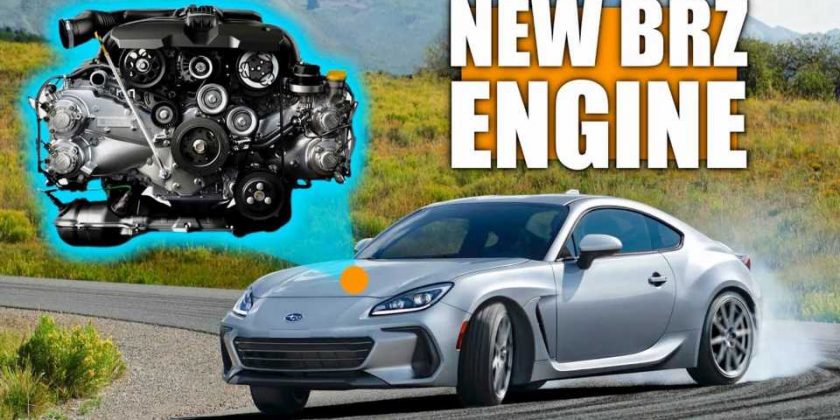No turbo = no fun?
The Subaru BRZ is all-new for the 2022 model year and there’s finally a new engine under the hood. Unfortunately, albeit slightly more powerful than its predecessor, it’s still naturally aspirated. We were really hoping for a turbo unit but Subaru PR chief Dominick Infante recently explained a turbocharged powertrain would hurt the vehicle’s center of gravity and handling.
While this statement by the company makes some sense, we are pretty sure many if you would like to hear a more detailed explanation of why a naturally aspirated engine is a good choice for the new BRZ. We can’t think of anyone else capable of providing a more in-depth review of the 2.4 boxer engine than Engineering Explained. At the top of this page, you can watch the channel’s 15-minute video taking a deeper look into the 2.4 boxer.
For those of you who haven’t taken a look at the specifications of the new BRZ, there are a few things worth talking about. First, the new 2.4-liter unit uses the same direct and port injection as its 2.0-liter predecessor and unlike the 2.4 turbo in the Ascent SUV, which relies strictly on direct injection.
The larger displacement of the 2022 model brings a nice 11-percent upgrade in the power output and an 18-percent increase in peak torque. The really good news here is that the torque comes on a lot earlier at 3,700 rpm versus 6,400 rpm for the previous model. Very importantly, when equipped with a manual gearbox, the model is just 17 pounds (7.7 kilograms) heavier than the outgoing BRZ despite the added power and the more torquey engine.
But, again, wouldn’t a turbo engine bump those nice figures even further? Engineering Explained might have the answer as to why a turbocharged engine won’t necessarily bring an improvement in the vehicle’s performance.
Source:
Engineering Explained
Source: Read Full Article
